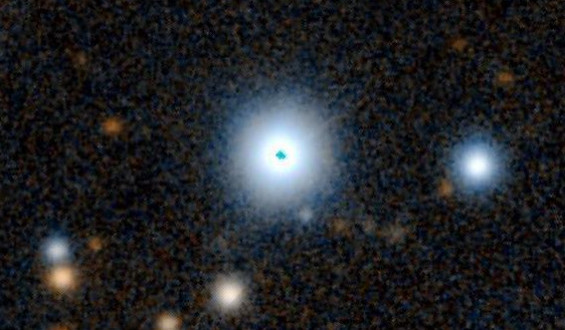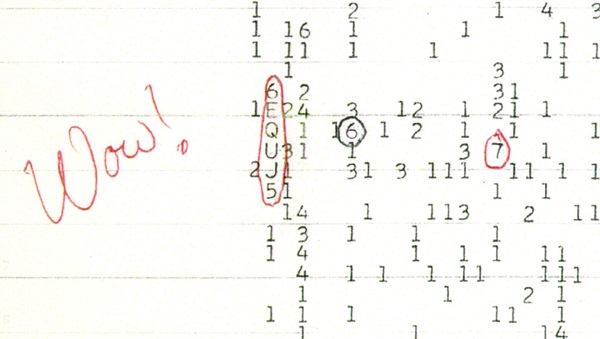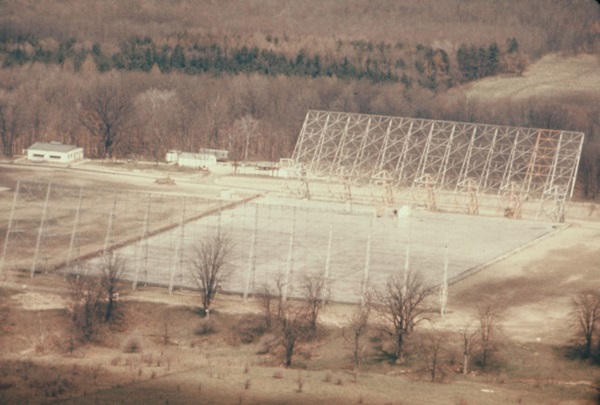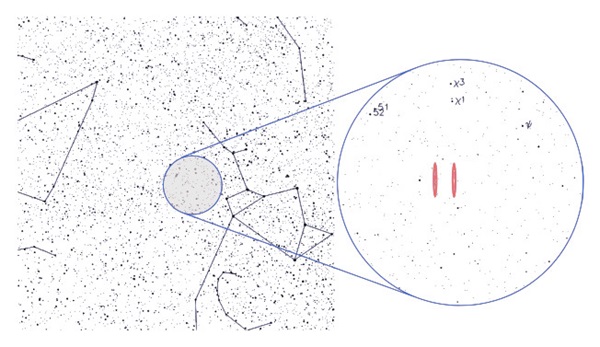Key Takeaways:
- Radio observations of the Sun-like star 2MASS 19281982-2640123, a potential source of the Wow! signal, yielded no evidence of technosignatures.
- This "null result" is considered valuable, enabling future SETI searches to focus on other potential sources of the Wow! signal.
- The observations utilized the Green Bank Telescope and the Allen Telescope Array, employing a methodology applicable to investigating other stars of interest.
- While the star was considered a strong candidate due to its solar-like properties and location, the lack of detection refocuses the search towards alternative explanations and other candidate stars.
New radio observations of a distant Sun-like star thought to be a likely source of the famous WOW! signal reveal no evidence that the system harbors anything (or anyone) capable of sending such a signal. Nonetheless, astronomers say the “null result” is an important step in verifying a new, more targeted approach to searching nearby stars for traces of the mysterious WOW! signal.
“A null result is a result,” Wael Farah, SETI astronomer and coauthor of the new study, tells Astronomy. “If we don’t detect anything, it means that other astronomers can spend their time looking for something else.”
Moving forward, astronomers can use this new approach to search other individual stars in the Milky Way for signals similar to the famous WOW! Signal. If found, such signals could potentially serve as evidence for the existence of technologically advanced extraterrestrial life.
The new observations were carried out by two radio telescopes and targeted a Sun-like star named 2MASS 19281982-2640123. The results were published in September in Research Notes of the American Astronomical Society.
Searching for the source of the WOW! Signal
2MASS 19281982-2640123 lies about 1800 light-years from Earth toward the constellation Sagittarius the Archer. In 2020, this Sun-like star was identified as a likely source of the WOW! signal, which has tantalized astronomers for decades.
The WOW! signal is so-named because astronomer Jerry Ehman — who first saw the signal in data from Ohio State University’s Big Ear Radio Telescope on Aug. 15, 1977 — wrote “WOW!” on the data printout.
The powerful and unusual radio signal lasted 72 seconds. Astronomers quickly ruled-out the possibility that it was caused by a terrestrial broadcast or a passing satellite, and despite repeated searches of the same sector of sky, the WOW! signal was never detected again.
The director of Big Ear, John Kraus, later wrote to Carl Sagan that the WOW! signal was “highly suggestive of extraterrestrial intelligent origin.” And it quickly become a prominent astronomical mystery, though several other similarly unexplained radio signals have since been detected.
Searching for a narrowband signal
SETI stands for the search for extraterrestrial intelligence. Established in 1984, the institute’s efforts now span hundreds of researchers and facilities around the world. Their activities range from monitoring the electromagnetic radiation of stars and other astronomical bodies to directly searching for transmissions from alien civilizations.
“What we do in SETI is that we search for signals that are not allowed to be generated by nature,” Farah says. And in the case of the WOW! signal, the fact that it was tightly constrained to a narrow band of radio frequencies was among its most unusual, unnatural features.
That’s because there are known physical limits on how stars emit radiation. And stellar emissions are known to span a wide range of the radio spectrum. “So, what we try and search for is a signal that is narrowband,” Farah says.
Radio signals that are spectrally narrow and exhibit certain other properties are considered candidates for “technosignatures,” Farah says. That means they could be traces of alien civilizations that are using radio technology to communicate.
To search 2MASS 19281982-2640123 for signs of something that might have created the WOW! signal, Farah and his colleagues used the Green Bank Telescope in West Virginia and the Allen Telescope Array in northern California.
These two radio telescopes took turns looking for artificial signals over a 24-hour period on May 21, 2022. At times, both telescopes even captured simultaneous observations. The search was funded by Breakthrough Listen, a SETI project supported by billionaire Yuri Milner’s Breakthrough Initiatives program.
This specific search turned up no evidence for technosignatures stemming from 2MASS 19281982-2640123 at any radio wavelength, Farah says. However, the technique utilized here can now be used to investigate additional stars that might be the source of the mysterious WOW! signal — as well as stars of interest in other SETI searches.
One star down, dozens to go
2MASS 19281982-2640123 was identified by the Spanish astronomer Alberto Caballero in 2020 as a potential source of the WOW! signal. Caballero did this by using data from the Gaia space observatory, which is creating a 3D map of the Milky Way with about a billion of the brightest objects in the sky.
Of the thousands of stars observed by Gaia in the direction of the WOW! signal, Caballero identified 2MASS 19281982-2640123 as the best potential source for further investigation. That’s partly because this star is remarkably like our own Sun, sporting about the same temperature, radius, and luminosity.
However, as Caballero pointed out in his study, 2MASS 19281982-2640123 wasn’t the only possible source of the WOW! signal. He highlighted another 66 stars in roughly the same direction as strong potential candidates.
Caballero tells Astronomy that the recent radio telescope observations of 2MASS 19281982-2640123 were exactly what he’d hoped for when he carried out his initial study. “It was very exciting to learn that the SETI community heard me and took action,” he says. “That was the main goal of my paper.”
Caballero also says that the Breakthrough Listen search was “exhaustive,” meaning that although it only lasted a few hours, it has effectively ruled out 2MASS 19281982-2640123 as the source of the WOW! signal.
Future searches, Caballero adds, might be well advised to first determine if there are any potentially habitable planets orbiting candidate stars that might be the source of the WOW! signal. If so, then researchers could opt to carry out radio observations of those star systems first.
Could the WOW! signal have come from near Earth?
There’s also the chance that the WOW! signal didn’t originate around a distant star at all. For instance, perhaps the signal was so strong because it came from something much closer to Earth.
In 2016, astrophysicist Antonio Paris of St. Petersburg College in Florida proposed that the WOW! signal could have come from comet 266P/Christensen, which hadn’t been catalogued at the time. This idea doesn’t hold water to some scientists, including Farah. But Paris tells Astronomy he stands by his theory that the WOW! signal might have been caused by a comet, or that it was a one-time burst of cosmic radiation.
But either way, he says he’s just excited that people are still trying to figure it out.
“It’s great to see others are attempting to solve one of the greatest puzzles in astronomical history,” he says. “The search for the elusive Wow! signal continues!”













